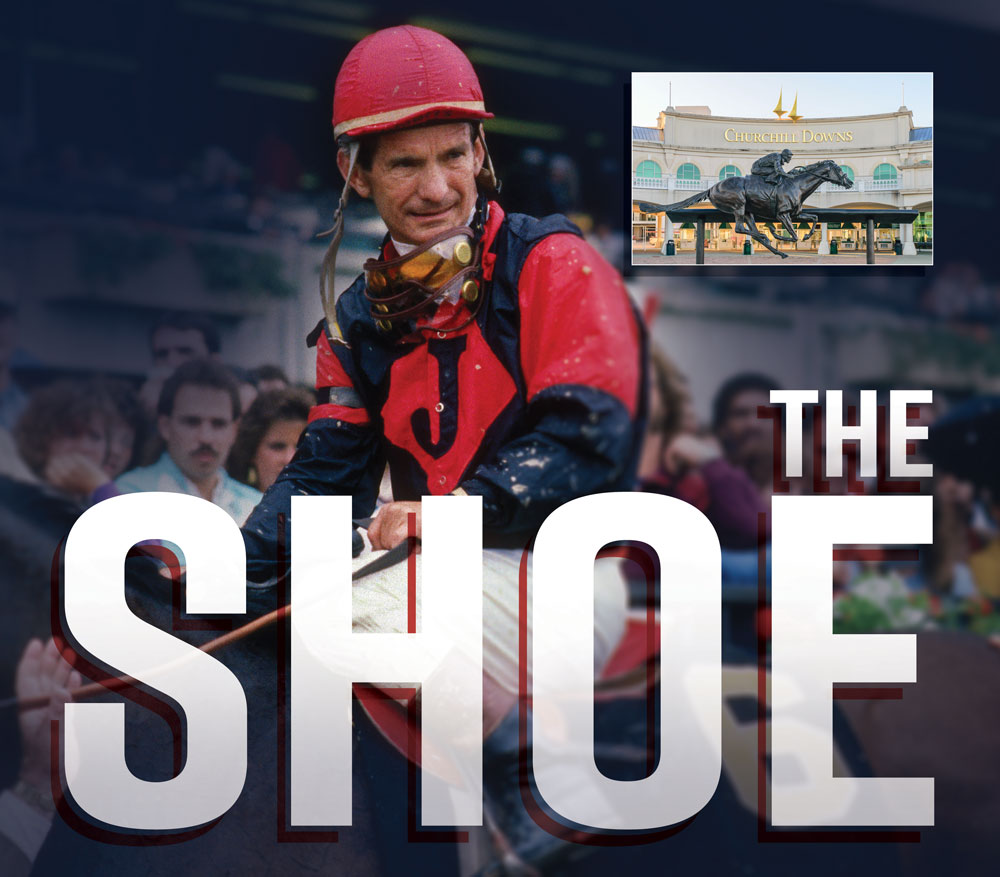
Pounding hooves, fast horses and a break in the crowd as horses and riders came into the final stretch — that was Willie Shoemaker’s world for most of his life. Also known as William Lee Shoemaker, Bill Shoemaker and “The Shoe,” Willie knew how to get the best out of his thoroughbred mounts throughout his 40-plus years “in the irons” as one of the most winning jockeys and trainers in the world. He rode 8,833 winning horses, setting a world record that held until 1999. He won the Breeders’ Cup Classic and 11 races in the Triple Crown series, though the Triple Crown itself illuded him. He won each of the three races in the Triple Crown multiple times — two Preakness Stakes, five Belmont Stakes and four Kentucky Derbies — but he never won all three in the same season. However, his beginnings were humble. Born in 1931 in an adobe shack on his grandfather’s ranch near Fabens, Texas, Willie’s seemingly effortless riding style began to be honed while riding across the ranch’s El Paso/Rio Grande area landscape.
The doctor who delivered Willie didn’t think the 1 pound, 13-ounce tiny infant would survive, but Willie’s grandmother created an incubator by wrapping him in a warmed blanket and placing him on a pillow near a warm oven. Life was hard for Willie’s family during those Depression Era days, so he lived with several relatives as they came and went at the ranch. Willie’s job, by age 6, was to ride a horse to pick up the mail. At age 10, he and his family, like so many other families of that time, moved to California looking for work, and he discovered horse racing.
By age 14, a school classmate had suggested that the diminutive Willie might be just the right size to become a jockey. He was strong and was known for not losing matches on his school’s wrestling and boxing teams. So, he secured a job at the Suzy Q Ranch and quit school, earning $75 a month. By age 16, he had become an exercise rider at the Bay Meadows track in San Mateo, California, learning from trainer Hurst Philpot and jockey, Johnny Adams, a future Hall of Famer. Willie’s first race as a jockey was in 1949 at Golden Gate Fields. He won the race, which netted him $120, the first dollars leading to a lifetime earnings of more than $123 million. He led in the amount of dollars in purses earned in a single year 10 times.
Size wise, Willie at full height/weight was only 4 feet 11 inches tall and 98 pounds. Other assets were his even temper, calm disposition and his remarkable understanding of horses. Horse breeder Rex Ellsworth was quoted in the Los Angeles Times as saying, “When a horse was doing his best, Shoe left him alone. When a horse loafed, Shoe would get after him. I never worried when Shoe rode one of my horses, because I knew he’d do a perfect job.” In 1959, Willie was inducted into the National Racing Museum and Hall of Fame.
His riding career was, as is usually the case with jockeys, riddled with small injuries, but in 1968, Willie broke his thigh when the horse he was riding fell on him. The doctor used a child-sized metal pin to repair the damage. After physical therapy for 13 months, he returned to winning races. In 1969, he was thrown and survived a broken pelvis, ruptured bladder and temporary paralysis of his left leg, only to return to racing and winning for the next 20 years. In 1981, Willie rode John Henry, and together, horse and rider won the Arlington Million, the first million-dollar stake thoroughbred race.
At age 54, in 1986, Willie rode a long shot horse, Ferdinand, in the Kentucky Derby. Ferdinand won, and Willie became the oldest jockey to win the Derby after having been one of the youngest years before to win that famed race. In 1990, Willie made a farewell tour of U.S. racetracks. He retired from riding to become a trainer, even after he became a wheelchair bound quadriplegic following an automobile accident in 1991. Willie retired as a trainer in 1997 after he faced the reality that he couldn’t totally know the horses anymore without riding them and the physical demands were becoming too much for him. He passed away in 2003, survived by a daughter from his third marriage.
Sources:
1. Encyclopaedia Britannica, October 2021. Encyclopaedia Britannica, Inc., Bill Shoemaker. www.britannica.com/biography/Bill-Shoemaker.
2. Encyclopedia of World Biography, 2004. www.notablebiographies.com/newsmakers2/2004-Q-Z/Shoemaker-Bill.html.
3. www.racingmuseum.org/hall-of-fame/jockey/William-Shoemaker.
4. https://www.espn.com/sportscentury/features/00016470.html.
Written by Virginia Riddle

You must be logged in to post a comment.